Easy Bibim Guksu (Korean Cold Noodles)
Bibim guksu, a spicy and refreshing Korean cold noodle dish, is the perfect antidote to warm weather. You’ll love its thin, chewy wheat noodles mixed with a vibrant bibim sauce, packed full of flavor. This recipe is simple to prepare, taking under 15 minutes, and customizable with your favorite toppings.
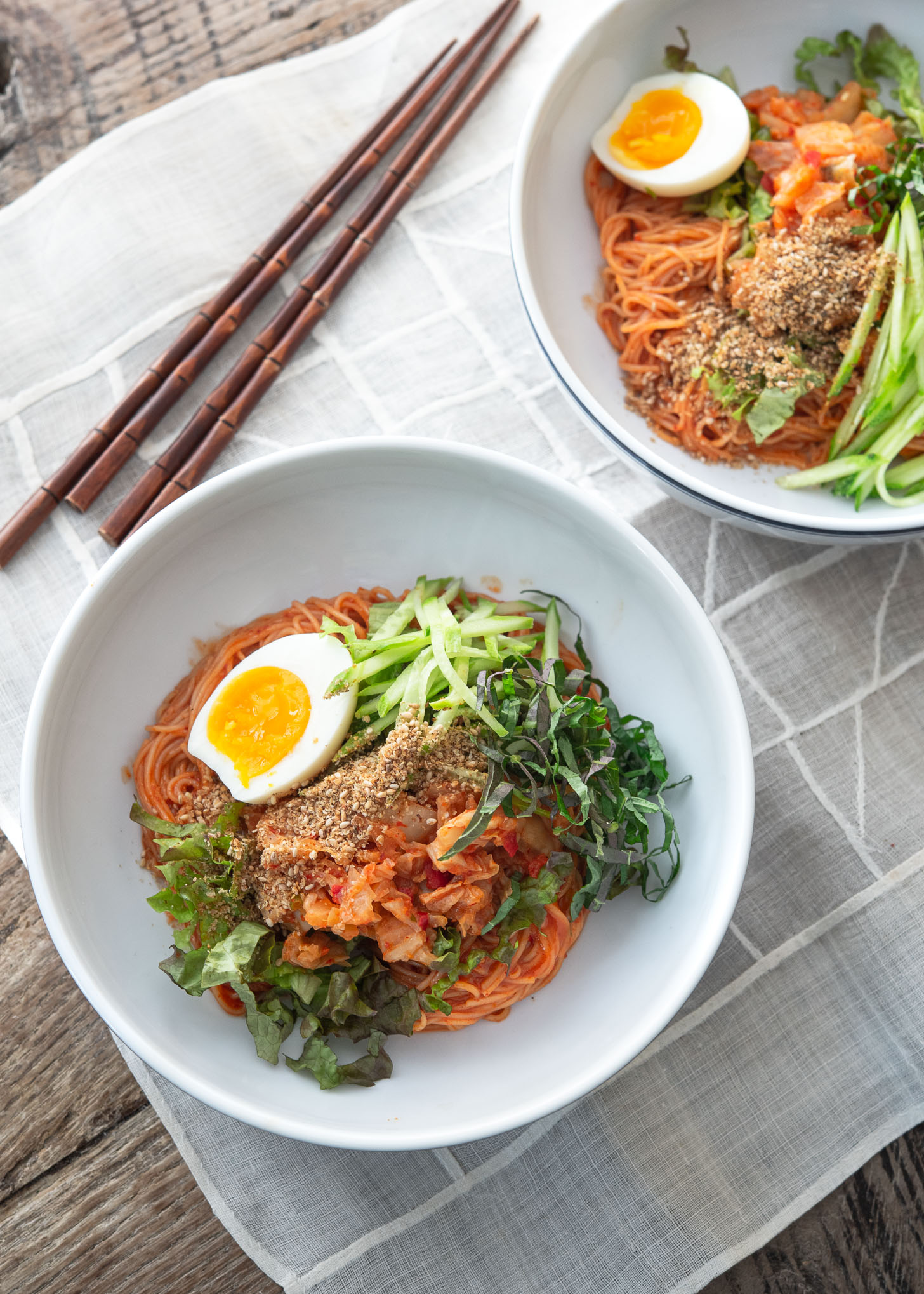
Bibim guksu always takes me back to Korean summers. My mother was an expert at both combating the heat and keeping us well-fed, regularly serving this spicy cold noodle dish.
Her secret? It required no lengthy cooking in a hot kitchen.
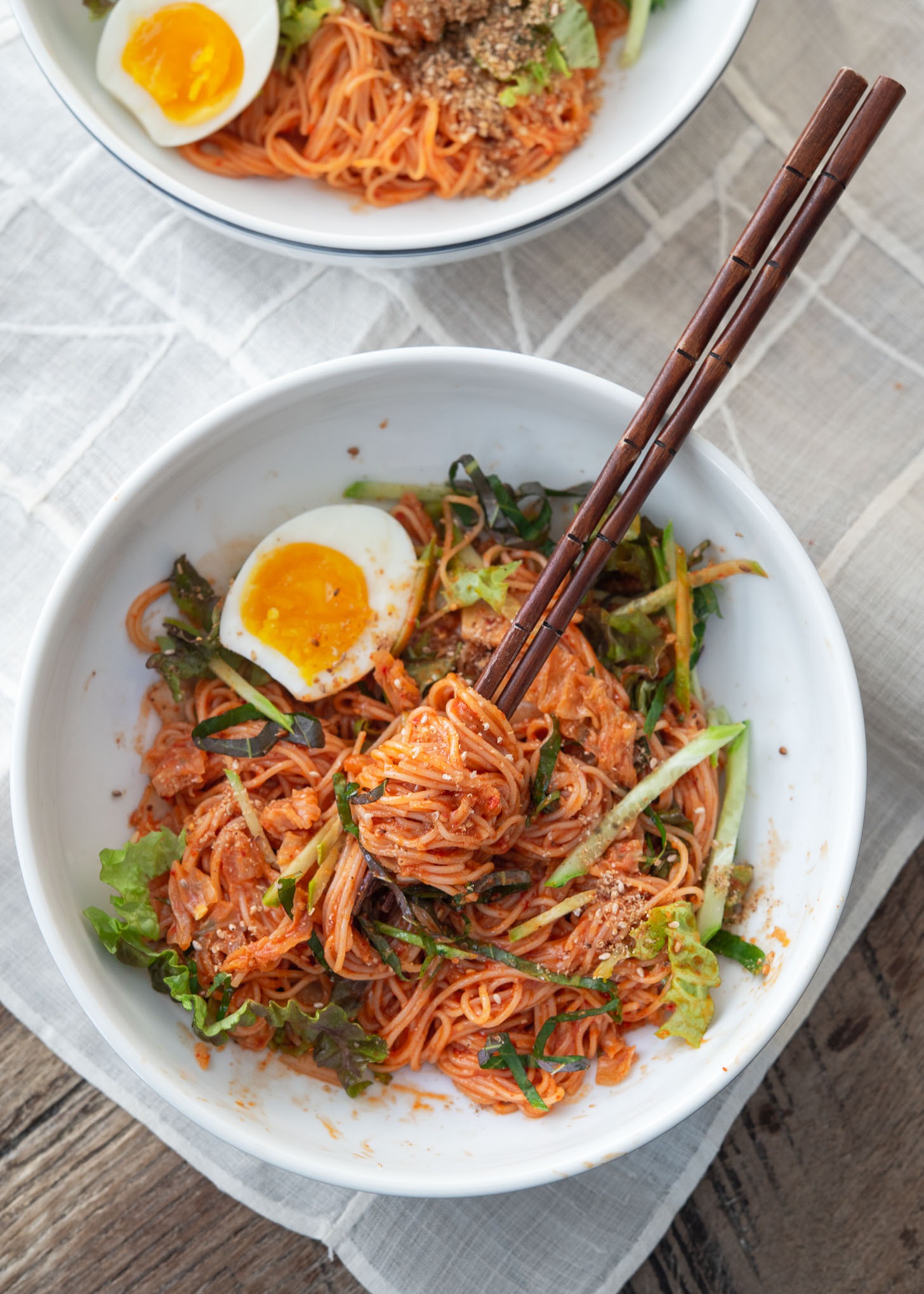
Not only was this Korean cold noodle dish my mother’s favorite summer dish, but my grandmother also loved serving it after a day of summertime fun.
Slathered in a spicy gochujang sauce and topped with crunchy veggies, it’s a dish that embodies my family heritage, warm summer memories, and, most importantly, a unique culinary experience.
While this type of gochujang noodles are traditionally popular summer dish in Korea, they can be enjoyed all year round.
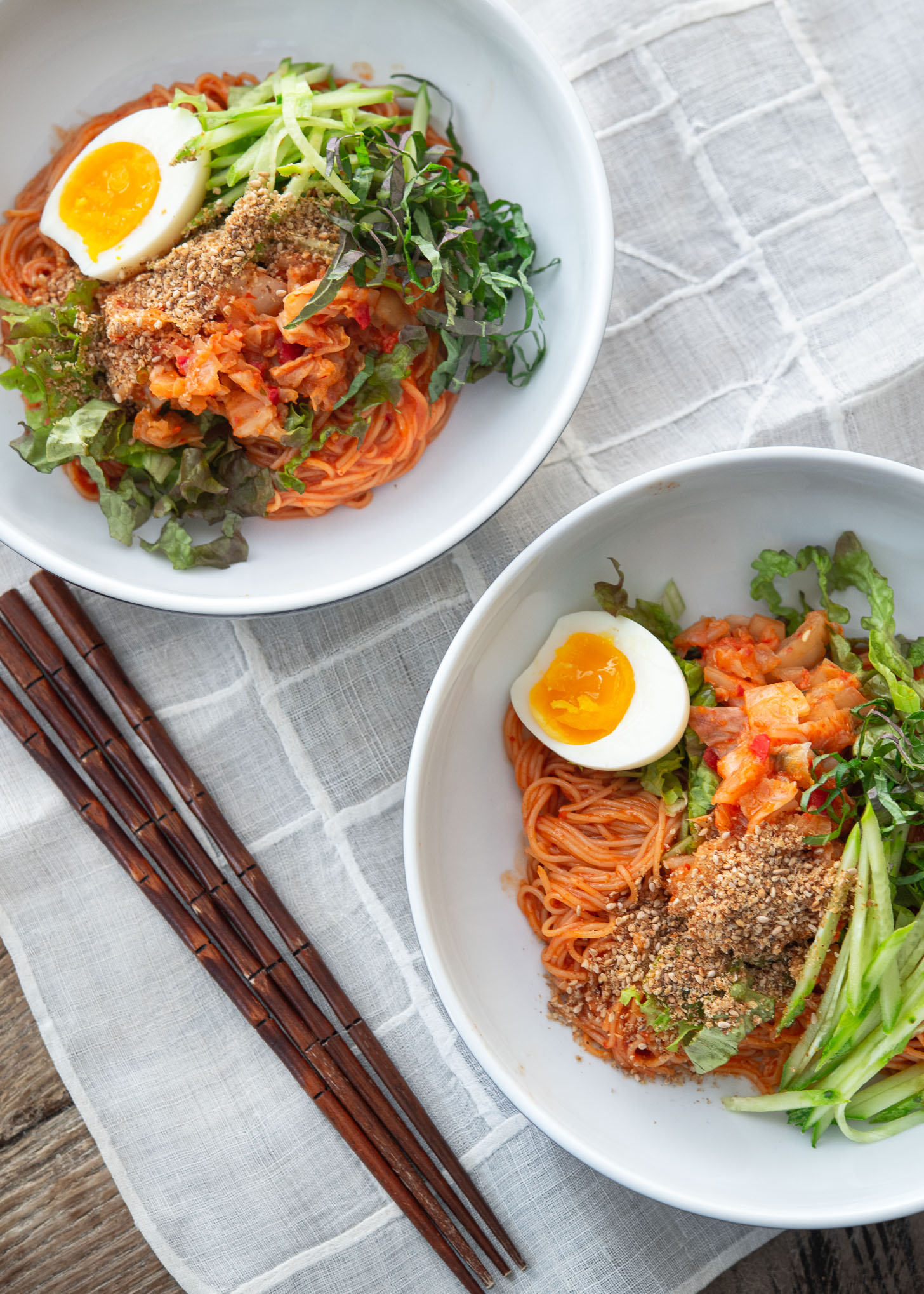
What is Bibim Guksu?
Bibim guksu is a beloved cold noodle dish in Korean cuisine that shines during the summer months. This spicy and tangy noodle bowl features thin, chewy wheat noodles known as makguksu or somyeon (somen).
They’re tossed in a spicy sauce created from gochujang (red pepper paste), vinegar, soy sauce, and sugar.
You’re free to customize this recipe with a variety of toppings such as sliced cucumbers, kimchi, shredded cabbage, carrots, onions, and even slices of beef or chicken. The dish is served with the noodles already coated in sauce, ready to be enjoyed in under 15 minutes.
Bibim Guksu vs Bibim Naengmyeon
Both are spicy cold noodle dishes originating from Korea, but they differ in the noodles used, the sauce ingredients, and the serving method.
Bibim guksu features thin wheat flour noodles, called somyeon, which are boiled and then rinsed in cold water. This dish is mixed with a spicy sauce made from pantry basics and is served with the noodles already coated in sauce. It’s a quick and refreshing summer meal option.
On the flip side, bibim naengmyeom recipe uses slightly chewier soba noodles and a more intense sauce containing a variety of savory ingredients. The noodles and sauce are served separately, with the sauce on top of the noodles, ready to be mixed together when eating.
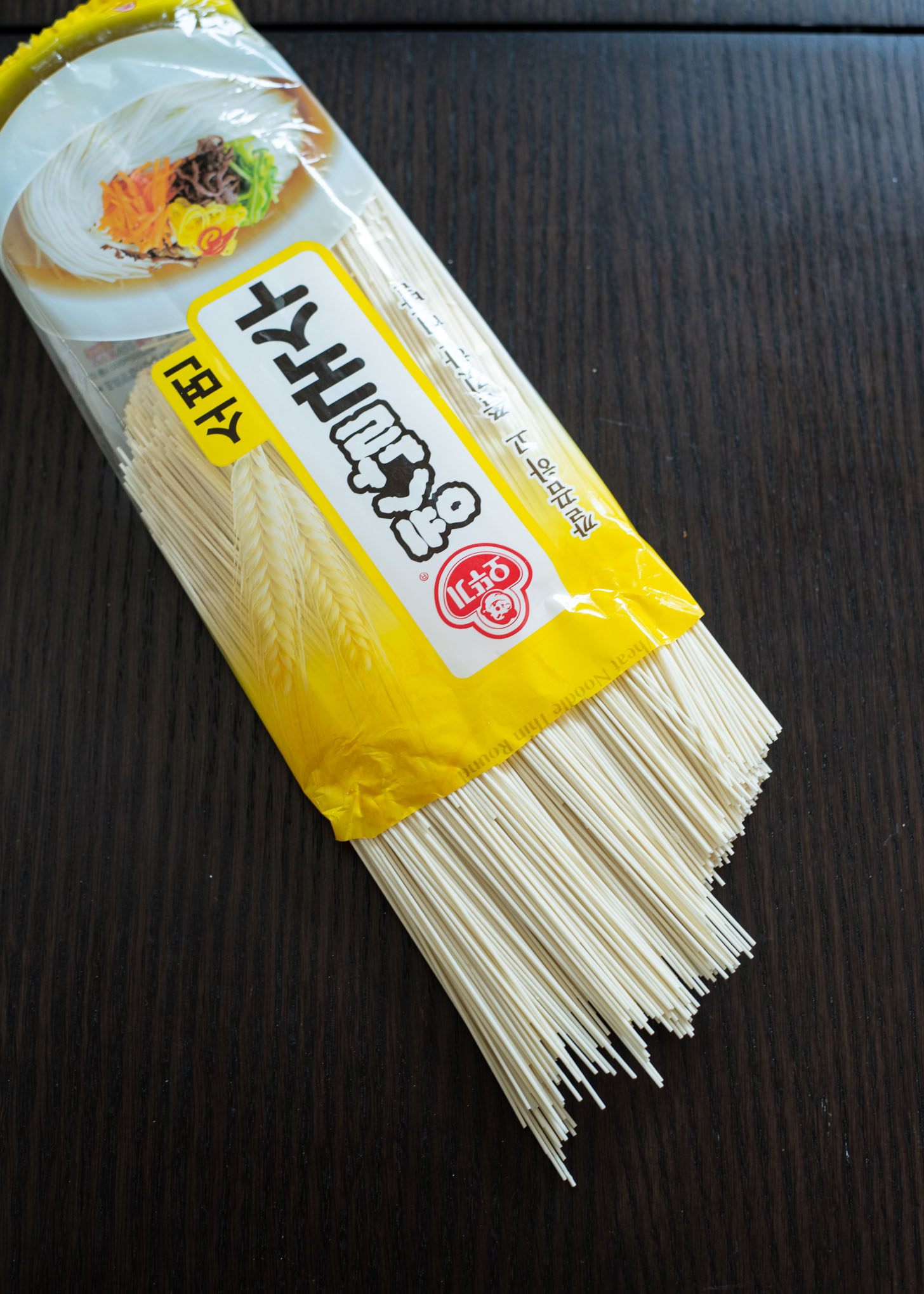
Selecting the Right Noodles
The right noodles are a crucial element in Korean spicy noodle recipe. The best options are packages that state “mak-guksu (막국수), or somyeon (소면)”. These thin, delicate wheat noodles pair perfectly with the spicy sauce and fresh vegetables.
To cook these noodles, boil them until they’re slightly chewy, then rinse them in cold water to halt the cooking process and cool them down. See my Kongguksu recipe for more ways to use these noodles.
Can’t find makguksu or somyeon? No problem! Japanese soba noodles make for a similar experience.
Perfecting Your Bibim Sauce
The sauce imparts bibim noodles with its signature spicy and tangy flavor. The standard ingredients for the spicy bibim sauce recipe include gochujang, vinegar, soy sauce, sugar, minced garlic, and sesame oil.
Adjust the spiciness and sweetness according to your preference by adding more or less gochujang and sugar.
Feeling experimental? Try adding grated pear or apple to your sauce. These fruits add sweetness and balance out the spiciness. Check out my homemade gochujang sauce recipe for more inspiration.
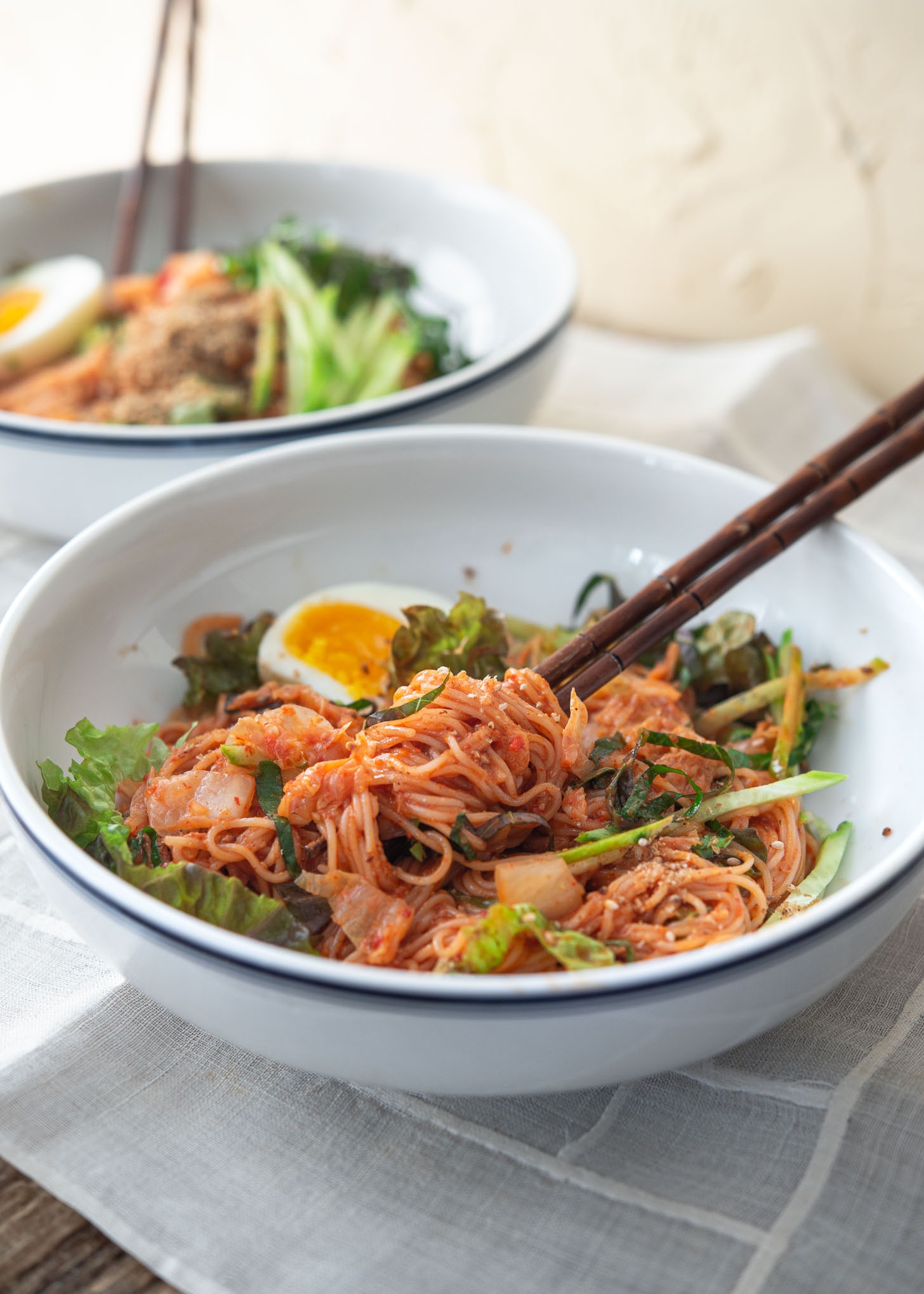
Recipe Tips and Tricks
- When boiling noodles, add cold water once the water has come to a boil and reached the top of the pot. The addition of cold water will lower the temperature of the water and result in chewier noodles.
- Repeat this process 2-3 times whenever the water returns to a boil, until the noodles reach your desired texture.
- Transform your noodles with creative and delicious toppings! Don’t limit yourself to just one option – try chopped cabbage kimchi for a spicy kick, or experiment with different salad vegetables to add color and texture.
- Sliced lettuce, crunchy cucumber, shredded cabbage, flavorful perilla leaves (kkaennip), and micro sprouts are all great choices to take your dish to the next level.
- A hard- or soft-boiled egg adds protein to the noodle dish.
- To add a burst of flavor, try sprinkling freshly crushed toasted sesame seeds on top of your noodles. This will add a nutty and aromatic taste to your dish that you won’t be able to resist.
- Simply crush the toasted sesame seeds in a small mortar or crush them between your fingers for the perfect finishing touch.
Ingredients list
For Sauce
- Gochujang (Korean chili paste): This spicy Korean condiment is a key ingredient in the bibim sauce.
- Gochugaru (Korean chili flakes): Adds heat and depth of flavor. You can omit it if you prefer a milder taste.
- Soy sauce: Adds umami flavor and seasoning.
- Rice vinegar: Tangy and acidic ingredient to balance out the heat and sweetness.
- Sesame oil: Nutty and aromatic oil for flavor and richness.
- Korean plum extract (optional): A sweet and fruity extract that enhances the overall flavor.
For Toppings
- Korean wheat noodles (somyeon): Use thin and chewy wheat-based noodles for the best result.
- Possible toppings: Chopped kimchi; salad vegetables such as lettuce, cucumber, and cabbage; micro sprouts; and hard or soft-boiled egg.
- Toasted sesame seeds: A simple yet flavorful addition. You can crush these and sprinkle them on top of the dish for added nuttiness and aroma.
How to make Bibim Guksu (Korean Cold Noodles)
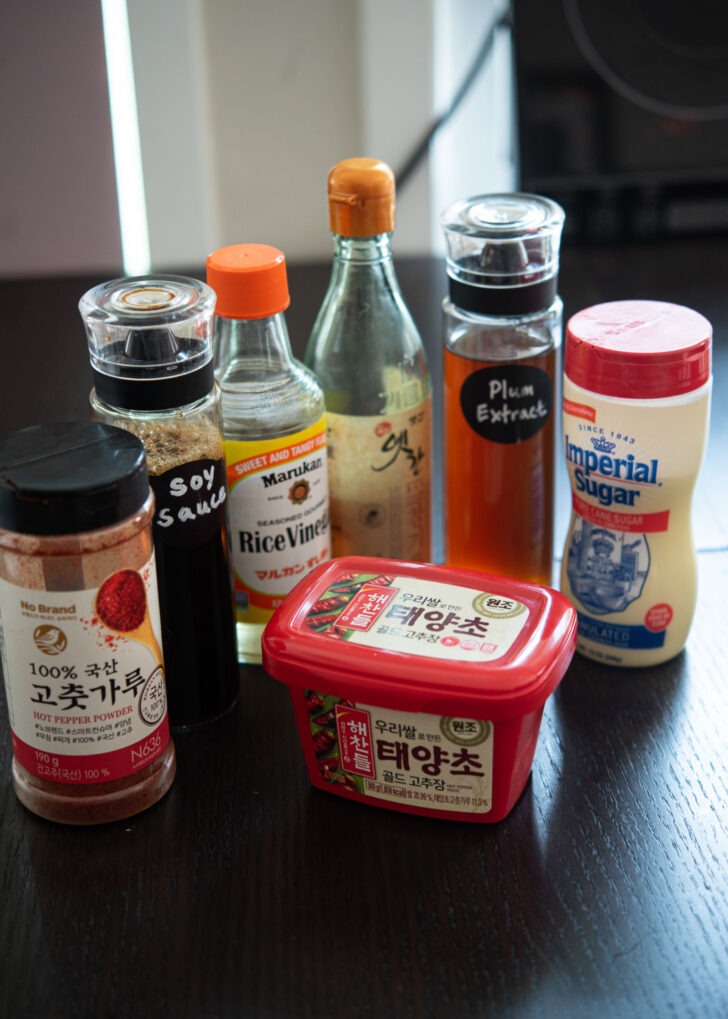
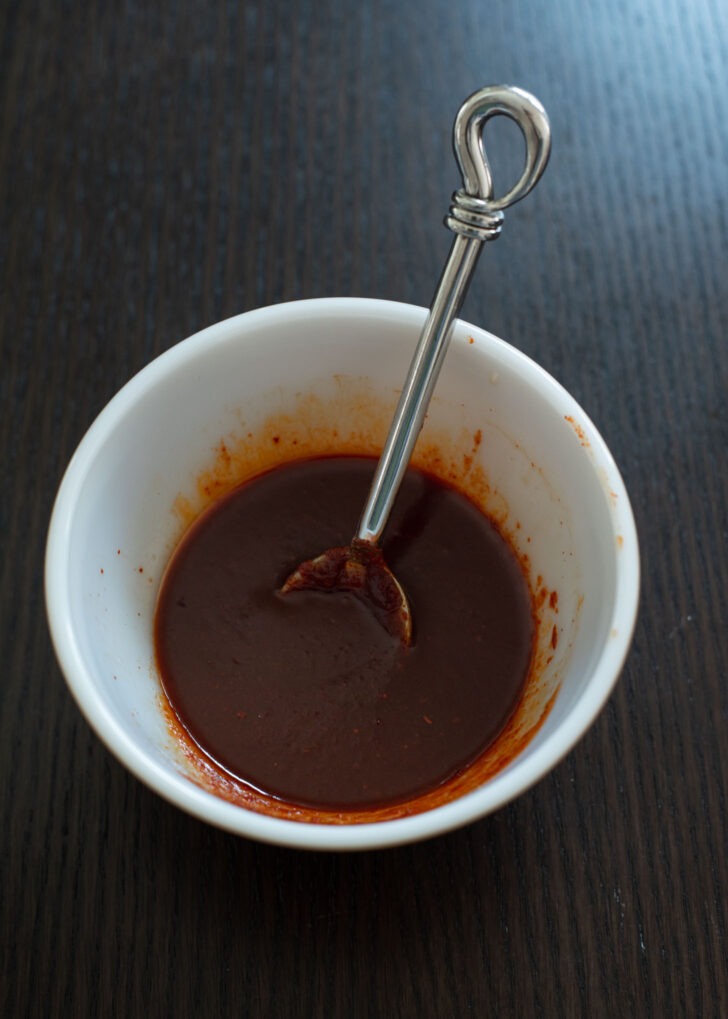
Step 1. Make the bibim sauce
- Combine all the sauce ingredients in a bowl and mix well. Set aside.
- Crush the toasted sesame seeds in a mortar until coarsely ground. Set aside.
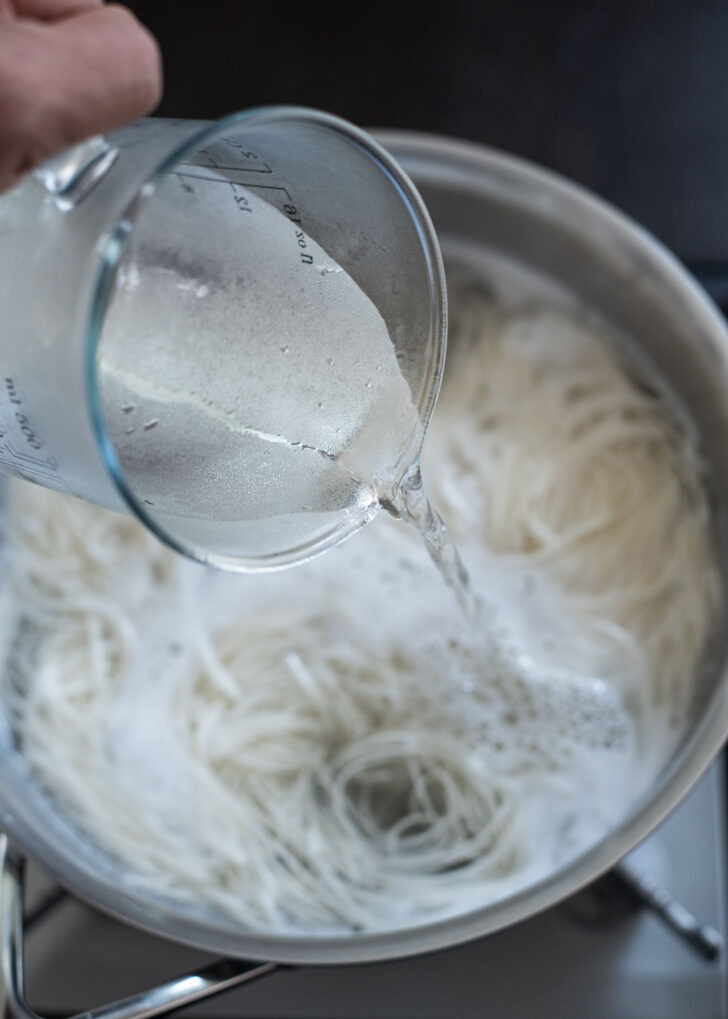
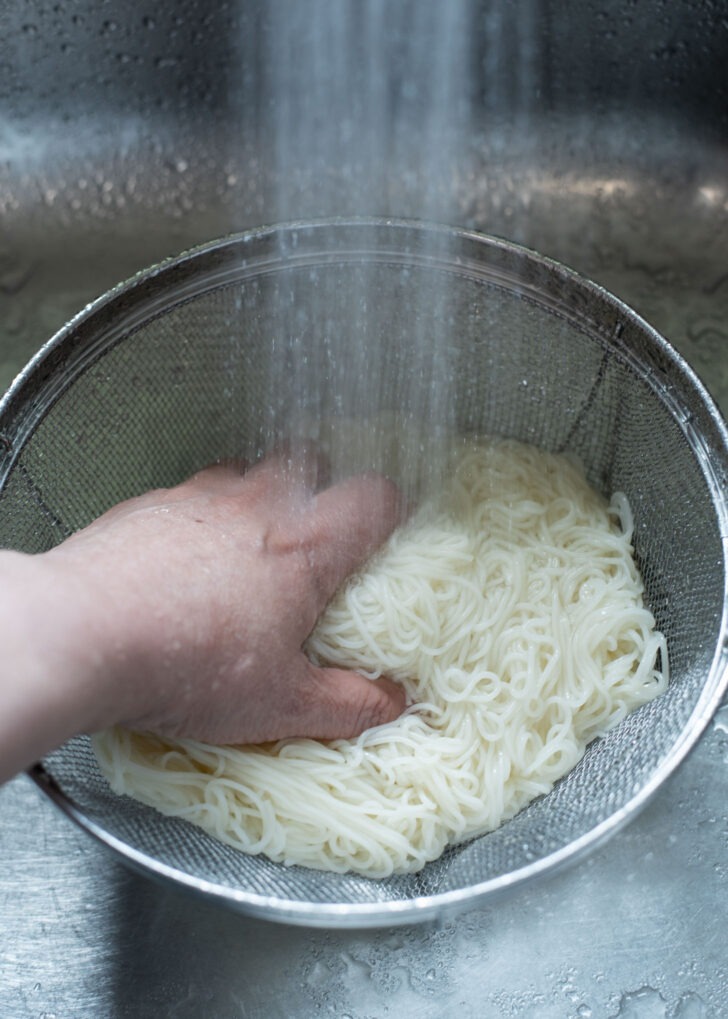
Step 2. Cook the noodles
- Bring a pot of water to a boil. Add the noodles and cook according to the package directions. To make the noodles chewier, add some cold water when the water reaches a full boil. Repeat this process 2-3 more times whenever the water returns to a boil until the noodles are fully cooked.
- Drain the noodles in a colander and rinse under cold running water while tossing the noodles around. This helps to cool down the noodles and makes them chewier. Drain the noodles thoroughly.
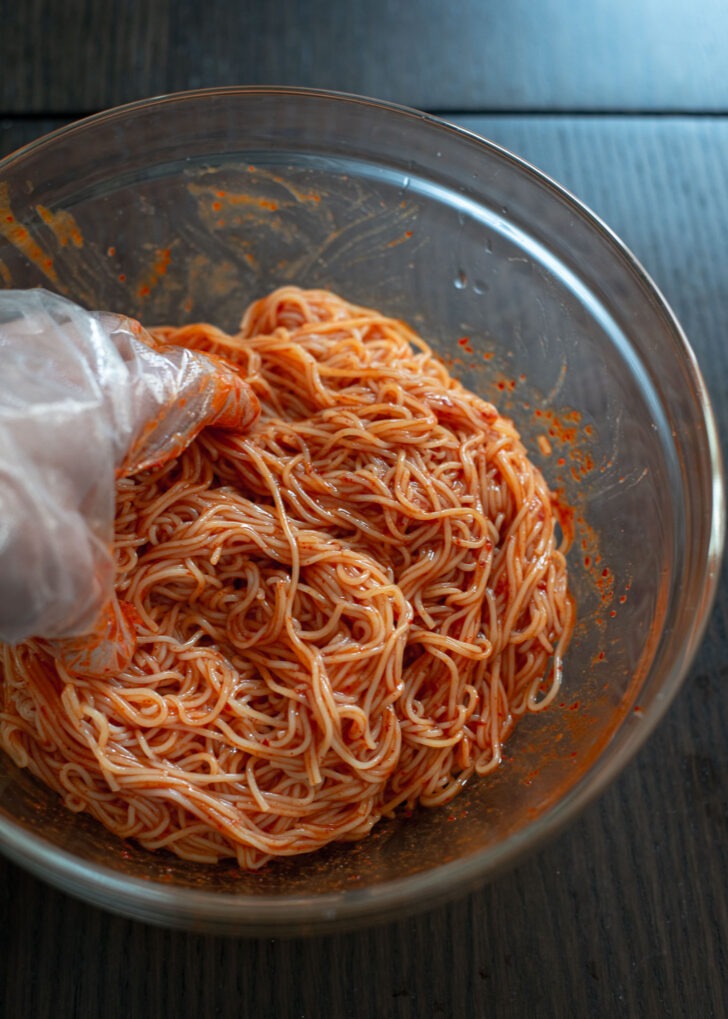
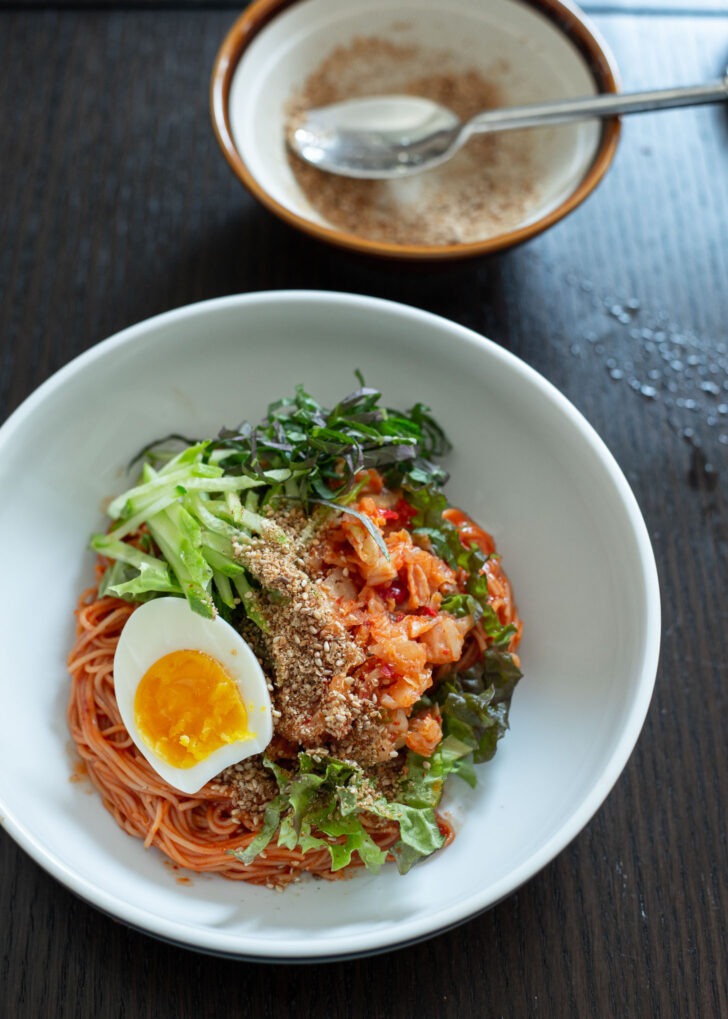
Step 3. Coat the noodles with sauce and add toppings
- Put the cold noodles in a mixing bowl and add the bibim sauce. Toss with your hands or kitchen tongs to evenly coat the noodles.
- Divide the noodles into individual serving bowls.
- Top with your desired toppings. I used chopped kimchi, sliced lettuce, cucumber, shredded cabbage, perilla leaves, and a hard-boiled egg. Sprinkle the crushed toasted sesame seeds on top and serve immediately.
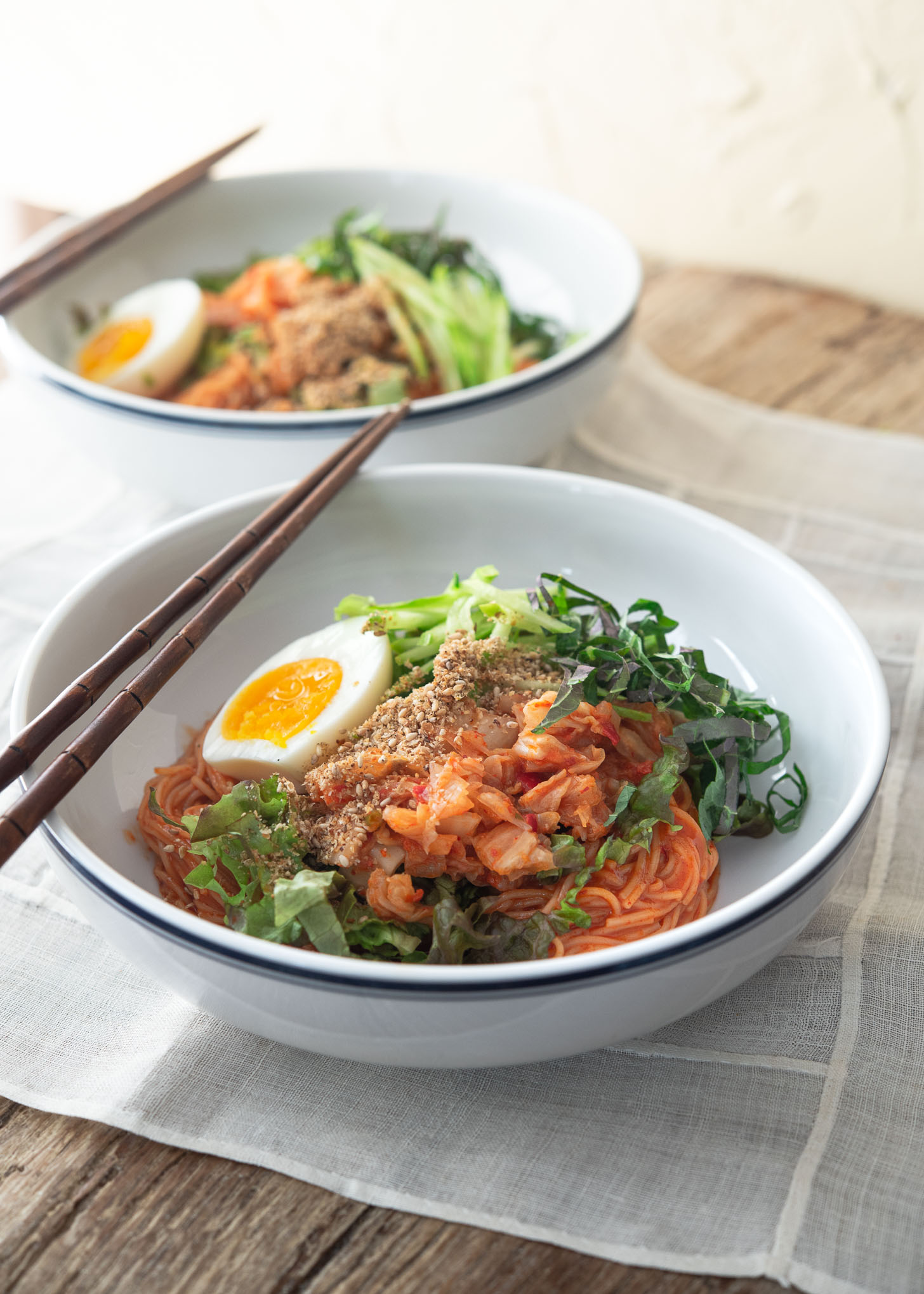
Serving suggestions
To eat, toss the noodles gently with the toppings to mix everything together. This will ensure that each bite is full of flavor and texture.
Unfortunately, this dish doesn’t store well as the noodles can turn mushy. So, it’s best to make just enough for one meal and share it with friends and family.
More delicious noodle dishes to try
Looking for more tasty noodle recipes? Check out these additional recipes:
Love this recipe? Rate it and share your experience in the comments below! On Instagram? Tag me to showcase your creation. For more delicious recipes, subscribe to our newsletter!
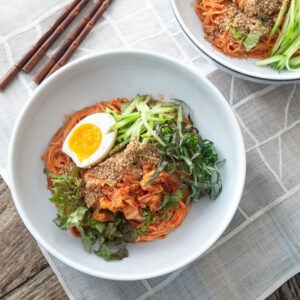
Easy Bibim Guksu (Korean Cold Noodles)
Recipe Video
Ingredients
- 8 oz thin wheat noodles (somyeon)
- 1/2 cup chopped kimchi
- 2 lettuce leaves, shredded
- 1/2 English cucumber, sliced into thin strips
- 2 perilla leaves (kkaennip), sliced, optional
- 1 hard or soft boiled egg, sliced in half
- 1 tbsp toasted sesame seeds, crushed
Bibim sauce
- 2 tbsp Korean chili paste (gochujang)
- 1 tbsp Korean chili flakes (gochugaru)
- 1/2 tbsp soy sauce
- 1 tbsp rice vinegar, or white vinegar
- 1 tbsp sugar
- 1 tbsp sesame oil
- 1 tbsp Korean plum extract (maeshil-cheong), optional
Instructions
- To make the bibim sauce, combine all the sauce ingredients in a bowl and mix well. Set aside. Crush the toasted sesame seeds in a mortar until coarsely ground. Set aside.
- Bring a pot of water to a boil. Add the noodles and cook according to the package directions. To make the noodles chewier, add some cold water when the water comes to a full boil. Repeat this process 2-3 more times whenever the water returns to a boil.
- Drain the noodles in a colander and rinse under cold running water while tossing the noodles around. This helps to cool down the noodles and makes them chewier. Drain the noodles thoroughly.
- Put the cold noodles in a mixing bowl and add the bibim sauce. Toss the noodles with your hands or kitchen tongs until they are evenly coated.
- Divide the noodles into individual serving bowls. Top with your desired toppings, such as chopped kimchi, sliced lettuce, cucumber, shredded cabbage, perilla leaves, and a hard boiled egg. Sprinkle the crushed toasted sesame seeds on top and serve immediately.To eat, toss the noodles gently with the toppings to mix everything together. This will help to ensure that each bite is full of flavor and texture.

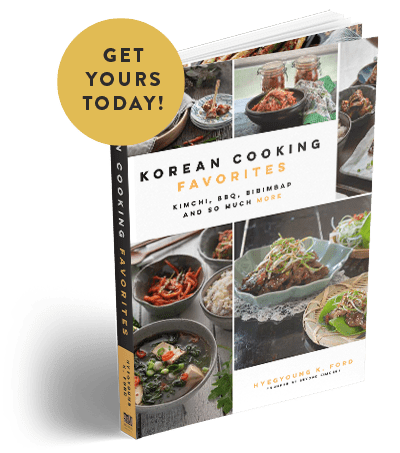
My favourite noodles to enjoy when it starts to get warm out! Looks incredibly flavorful!